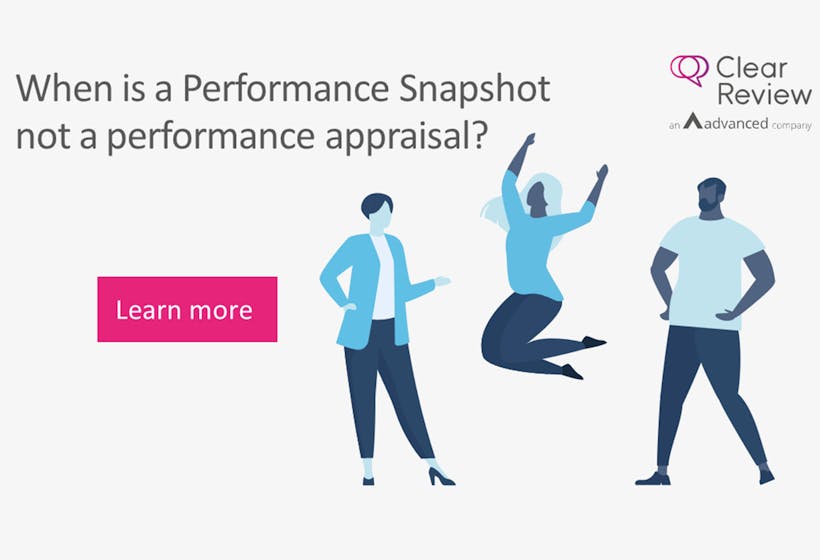
So you like the idea of continuous performance management, that doesn’t focus primarily on ratings and rankings, but you still need to identify top and bottom performers? Fear not! We have a simple and fair solution to help you do just this. Here at Clear Review we believe that annual appraisals are an outdated method of evaluating staff, that doesn’t give a full and accurate picture of a person’s performance. That’s why we believe organisations should be using the “Performance Snapshot” instead.
A Performance Snapshot is done by answering a number of highly targeted multi choice or rating questions. This can be done easily by using the data that has been gathered from the interactions staff have had with their manager over the last 12 months, including check-in conversations, agile goals, and real time feedback. By using the Performance Snapshot and following 3 rules, your organisation can make fair, fact based decisions on staff ratings.
Keep questions clear and simple
Annual appraisals sometimes pose a multitude of questions that could be taken in different ways depending on who is reading it. These questions could lead to unclear and complex answers that don’t really say much about the employee and their performance over the last year. An article in the ‘Harvard Business Review’ talks about the problem with asking questions such as “Describe the ways the employee’s performance met your expectations” or “What are their significant accomplishments?” as these questions are too general and open ended, resulting in unclear results.
Our suggestion to combat this is simple. Ask managers clear and easy to answer questions. For example, “Has this person consistently delivered their objectives successful over this period?” With a multiple choice answer such as “Inconsistently delivered / consistently delivered / over-delivered.” These sorts of questions allow for fact based answers, rather than opinions, leading to a fairer rating.
Managers should find these questions especially easy to answer, as they will be able to use the data that has been gathered on the Clear Review platform, which displays a clear overview of the employee’s performance from the past year.
Avoid bias
When answering certain questions a manager’s opinion may get in the way of an accurate depiction of an employee’s performance. Even if they don’t mean to they might have preconceived ideas on a member of staff that could prevent them from thinking about their performance objectively. This works both ways, with average employees getting rated better than they should due to favouritism, and good employees getting rated down due to turbulent working relationships. But a manager’s personal relationship should not have any bearing on a person’s rating.
By sticking to clear, multiple choice questions with no room for ambiguity, the chance for bias to affect a managers answers is vastly lowered. If the question is “Describe the ways the employee’s performance met your expectations” this gives the opportunity for managers to construe the question in a variety of ways. But if the question is ‘has this person reached their goals’ with an option of Did not reach set goals / Met set goals / Exceeded set goals, and the manager is basing their answer around data on a system, they should be able to give an honest and unbiased answer to this more easily.
Use a 3 point scale
When it comes to rating staff we suggest not complicating matters more than you need to. By introducing a simple 3 point scale to your organisation you eliminate any grey areas and avoid annoying staff with words like ‘satisfactory’ or that they ‘meet expectations’?. We believe it is better to use the ratings On Track, Off Track or Exceptional. Most of your staff member will naturally fall under the ‘On Track’ category, which is positive but avoids the ‘shades of grey’ between multiple middle-ranking ratings.
As well as appeasing the majority of staff, this system allows you to identify the top achievers and those not performing as well as they should do. Your top achievers can then be rewarded however your organisation sees fit, incentivising them to keep up their good work the in the coming year. And the bottom performers can be reviewed and steps can be taken to improve their performance moving forward.
Moving forward with your new system
Most staff should be happy with this new system, as it is easy to understand and should give a fairer picture of staff performance. Just remember to communicate the new system as early as possible and explain why you are making the changes. There are plenty of resources on this on the Clear Review website and you can sign up to our newsletter to ensure you don’t miss any of our upcoming content.

